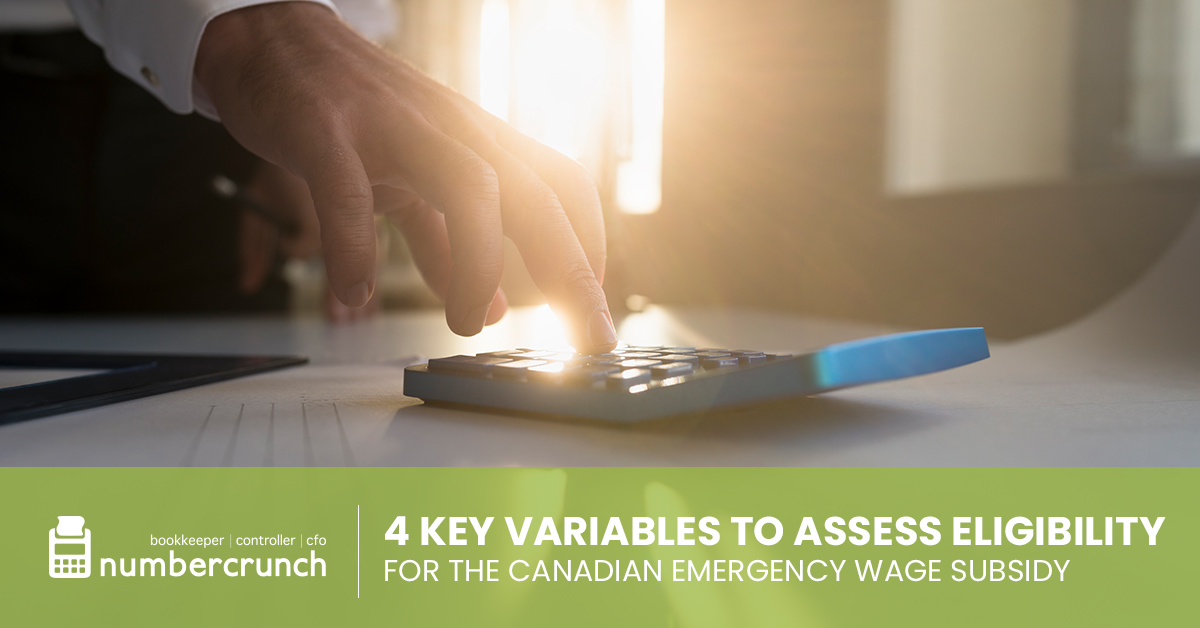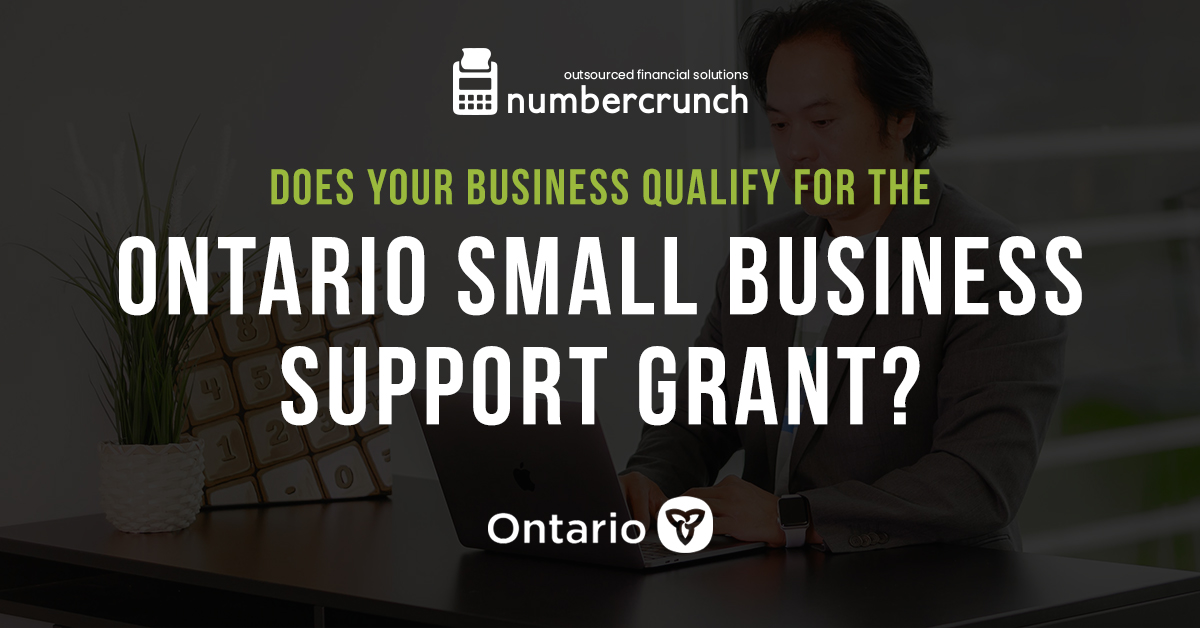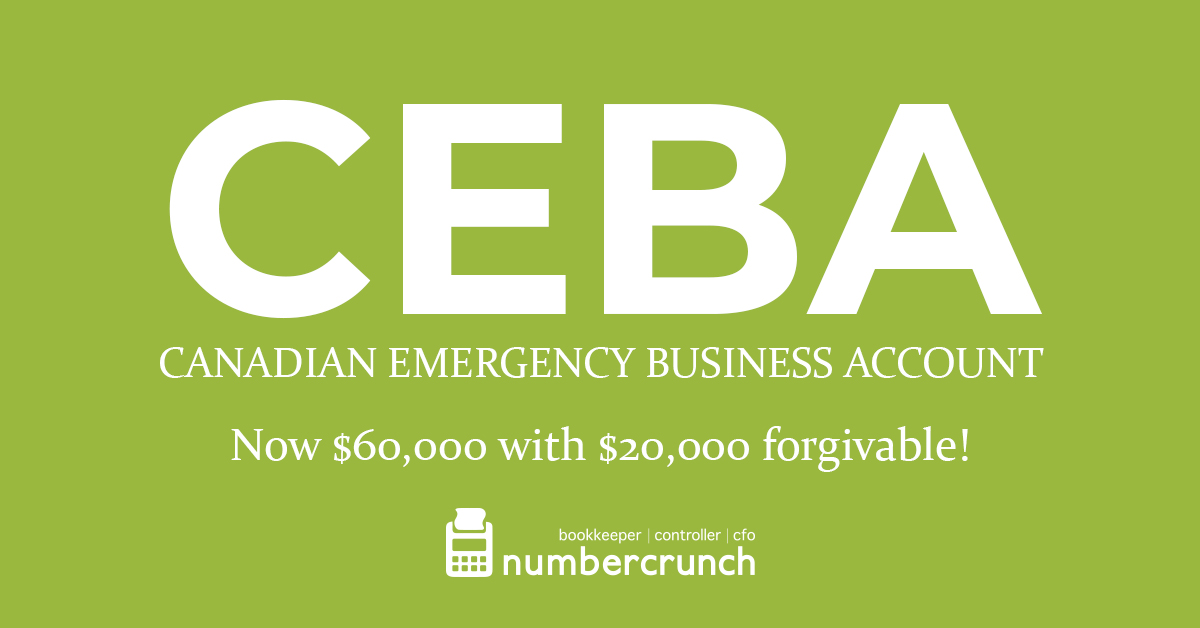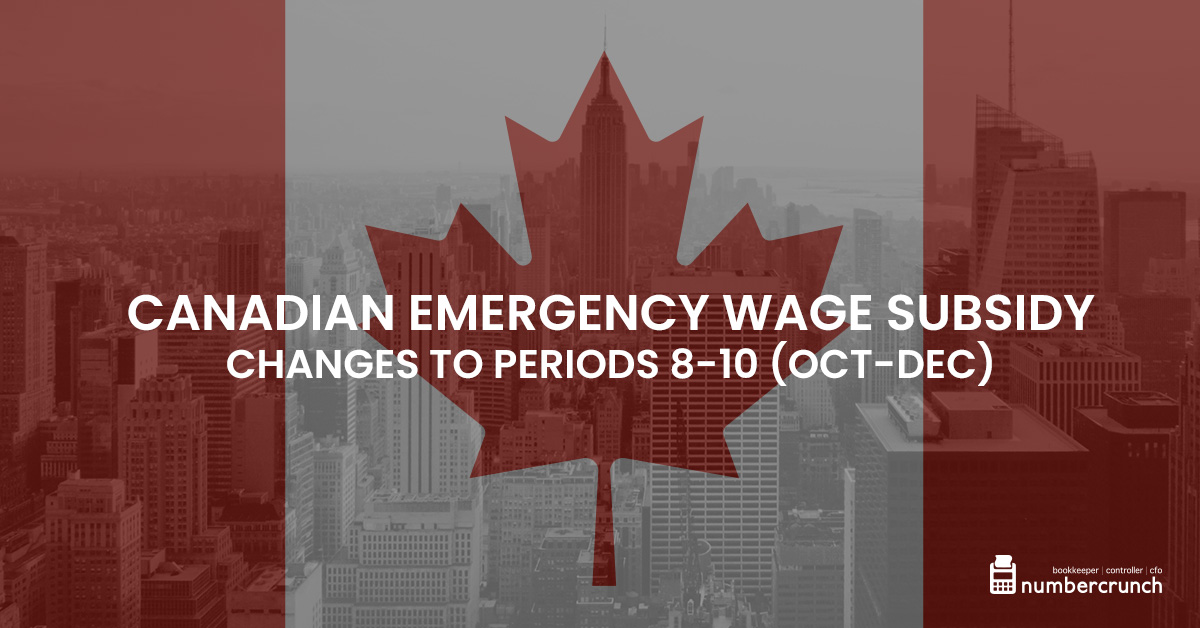The Canada Emergency Wage Subsidy (aka CEWS) is a wage subsidy program available to eligible employers for a period of twelve weeks that provides a subsidy of 75% of the remuneration paid to each employee to a maximum of $847/week.
The formula to assess eligibility is built around 4 key variables:
1. Time comparisons
2. % drop
3. Revenue recognition methodology chosen
4. Previous eligibility
I’m going to walk you through each of these variables and keep in mind that some have changed since the original announcement of the program on March 27th. This information is up to date as of May 5th, 2020 and is subject to change. If information does change I will continue to share with our newsletter group. If you want to stay up to date you are welcome to join our newsletter here or email me at susan@numbercrunch.ca and I’ll add you to our email list for updates.
Okay let’s get to it. Here are the 4 key variables to determine eligibility:
1. Time comparisons.
You will be measuring revenues for each of 3 months – March, April and May of 2020. Each calendar month is measured independently of each other and thus you must run the analysis each month. To assess eligibility you can compare revenues.
Option 1: The same month in the prior year
Option 2: An average of Jan/Feb 2020
So for March we’re talking about a comparison of March 2020 to what happened March 2019 or to the average of Jan/Feb. To calculate the average you will add Jan and Feb together and divide by two. So these 2 options are defined as ‘Prior Year’ or ‘Prior Reference period’.
2. % drop required to meet eligibility.
The program originally required a drop of 30% but since COVID-19 did not really come to town in a material way until mid-March the government decided that a 15% drop in March would suffice. So the end result is that the qualification rate varies depending on the month. In March, revenues must have dropped by 15% over either the prior year or prior reference period to qualify, and in April and May the required drop is 30%.
3. Your choice of determining “Revenues”.
I could arguably talk for 30 minutes alone about this one topic because there are so many Canadian businesses not recording revenues in accordance with accounting principals. But CRA has spared us all additional compliance headaches right now by suggesting that you should just continue to recognize revenue using your ‘normal accounting method’. If you are using Quickbooks Online – we are talking about the top ‘Income’ section of your Profit and Loss. For other software it would be considered the Revenue section of your Income Statement. As long as you do what you’ve always done you can safely compare what shows up on the top of your P&L (aka Income Statement).
Or – you have the alternate choice to use ‘Cash Basis’ as a methodology to determine eligibility. This is essentially the cash actually received by your clients during the month. In many businesses there will be a difference between ‘cash received’ and ‘revenues reported’ so you can choose whichever best demonstrates your drop in business.
4. Carryon factor.
The government added this one to give business owners greater confidence of affordability to hire back employees previously laid off. If you qualify for one period you will automatically qualify for the subsequent period. So if you qualify for March you will automatically qualify for April. And if you qualify for April you will automatically qualify for May.
Let me recap the 4 considerations again:
You are comparing either ‘earned revenue’ or ‘cash received by clients’ in March, April and May to either the ‘prior year’ or the ‘prior reference period’ (aka average of Jan and Feb). You need to demonstrate a 15% drop in March and a 30% drop in each of April and May to qualify for all 3 months or if you qualified for March or April you automatically qualify for the subsequent period.
Hopefully I’ve armed you with the knowledge to determine whether you qualify. If not, we have a team of people trained and eager to help you out.










